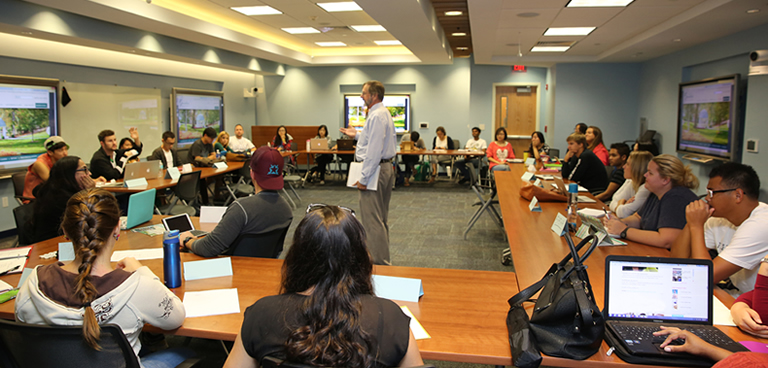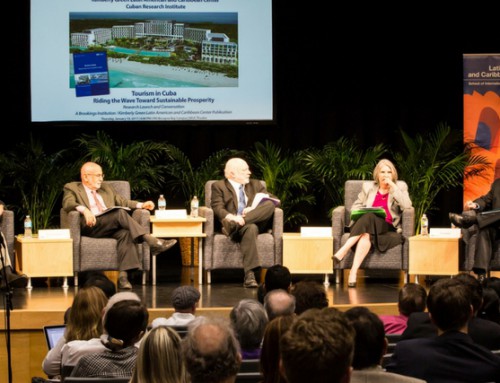After two years of conceptualization, design, and the complete overhaul of a tired, multi-purpose room inside the Hospitality Management building, the Chaplin School has completed the transformation of a new classroom into one of the most innovative learning spaces of its time.
The classroom challenges traditional pedagogical methodology, removing the educator from the front of the class. At the center of it all, you will find cutting-edge technology and modular-style furnishing, providing educators and students with an environment carefully devised to encourage new levels of engagement and collaboration.
While the new space still includes a white board, it is not surprising that this old tool takes a back seat. Given the five interactive LCD touchscreens raging from 70 to 80 inches, the three HD cameras and microphones at three different speaker zones, and the capability to stream, receive, and capture video simultaneously, you could say the roughly 1,000 sq. ft. space contains as much technology as a presidential control room.
And so far, since faculty began using the classroom at the start of the Fall 2014 semester, the reaction has been passionately positive.
“I love this new classroom. It removes barriers between the teacher and students. A class becomes more of a mutual discussion than a lecture, which makes learning fun,” said hospitality law professor John Thomas.
The pragmatic use of technology in this room, which can be employed effortlessly, gives students an exceptional learning experience.
“Technology plays the most important role in modernizing education. The abundant media technology in this classroom places the student in an environment that is connected with current student values, where multimedia, online communication, and peer-group interactivity carry profound importance,” said Dale Gomez, director of information technology at the Chaplin School.
And group interactivity is key in this classroom. While students work on projects in separate teams, technology allows them to constantly interact with each other. An instructor can easily record presentations from multiple angles for later review, and connectivity with the students’ mobile devices is as easy as pressing a button.
“We believe that this is a one-of-a-kind classroom at FIU, maybe even anywhere. Its flexibility and interactivity with technology will drastically change and enhance the learning process. Although we conceptualized it, it will be interesting to see how far our faculty and students can take it, as they find new ways of maximizing its potential,” said associate dean Mohammad Qureshi.












